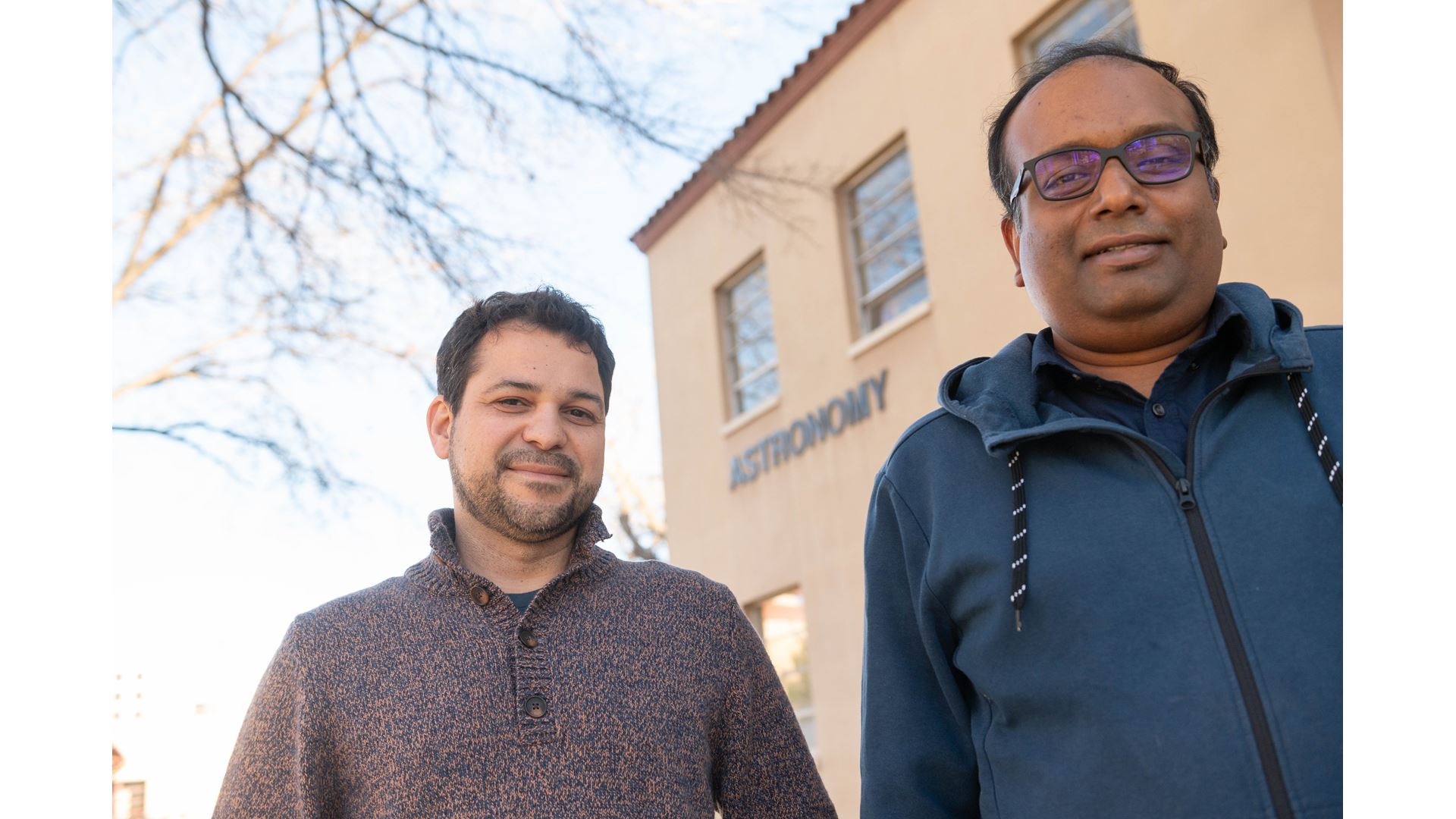Debanjan Sengupta, postdoctoral researcher at New Mexico State University, received a three-year, $750,000 award from the NASA Emerging Worlds program, which aims to understand the formation and early evolution of the Solar System.
Sengupta’s research, titled “Planetesimal Formation: A Natural Synergy between Streaming Instability and Turbulent Concentration,” seeks to understand how the planets were formed in the infancy of the solar system.
“What was the solar system like? What were the physical conditions? How did the planets come to be? To figure that out, I take a computational approach,” Sengupta explained. “I solve equations to figure out the processes that initially formed the solar system. I can also get information from meteorites that have fallen on the surface of the earth, which act as fossils of the Solar System formation.”
Sengupta’s research, funded by NASA’s Emerging Worlds program, aligns with the agency’s mission to understand how the Sun’s family of planets and minor bodies form and evolve, since answering these questions is key to the development of future NASA missions. The three-year grant supports salaries for Sengupta and a senior researcher at the NASA Ames Research Center, plus a one-month summer salary for Wladimir Lyra, NMSU astronomy associate professor who is guiding Sengupta’s research. Lyra, like most faculty, works a nine-month contract and is not paid over the summer. In addition, the grant provides funding to both NMSU and NASA Ames institutions and covers travel for conferences and publication costs for the researchers.
Lyra established his planet formation group at NMSU in 2019. He received a NASA Theoretical and Computational Astrophysical Networks grant in 2020, a National Science Foundation Astronomy and Astrophysics grant, also in 2020, and a NASA Emerging Worlds grant in 2022.
Lyra explained that we do not yet understand how asteroids and comets form, with two main methods being considered among astronomers. This is important because asteroids and comets are the building blocks of planets. Sengupta’s research proposes combining these two methods into a third option.
The first method is dubbed “turbulence concentration”. Lyra says. “Think of turbulence as a sea of swirls, of all sizes, coming in and out of existence,” Lyra explained. “When a dust grain enters a swirl, it can either follow the flow, or get flung out of it. Most grains get flung out and concentrate in between the swirls. If the number of grains is large enough, the concentration between the swirls can achieve critical density for gravitational collapse and form an asteroid.”
Conversely, the second mechanism, nicknamed “streaming instability”, can happen in a non-turbulent flow. A dust grain orbiting in the disk of a young star will suffer a headwind from the gas. This headwind makes it drift toward the star.
“Instead of a neat flow of dust grains,” Lyra continued. “What we see are streams of dust. These streams get much denser than the average density of dust and, in the densest pockets of these streams, critical density for gravitational collapse into asteroids can be achieved.”
Sengupta’s new theory combines the two.
“What we know is that past theoretical work in the field has shown that these two processes (“turbulent concentration” and “streaming instability”) have problems working alone,” Sengupta said. “What we want to know is what happens if those two processes work together. We think that, by putting them together, we can have a convincing theory of how those planetesimals actually form, and a better understanding of our world.”
Lyra welcomes Sengupta’s new focus in the larger field of Solar System research. “Graduate assistants and postdocs are a very important part of our work because there’s always more to work on than there are hours in the day,” Lyra said, “and I only have two hands; we professors need that help. Here at NMSU, we have a nationally and internationally competitive graduate program in astronomy. Mentoring the students and postdocs is not only an enriching experience, but also a necessity for the research we do.”
-30-
CUTLINE: From left: New Mexico State University astronomy associate professor Wladimir Lyra and postdoctoral researcher Debanjan Sengupta, who received a three-year, $750,000 grant to research how the planets were formed in the infancy of the solar system. (NMSU photo by Josh Bachman)

